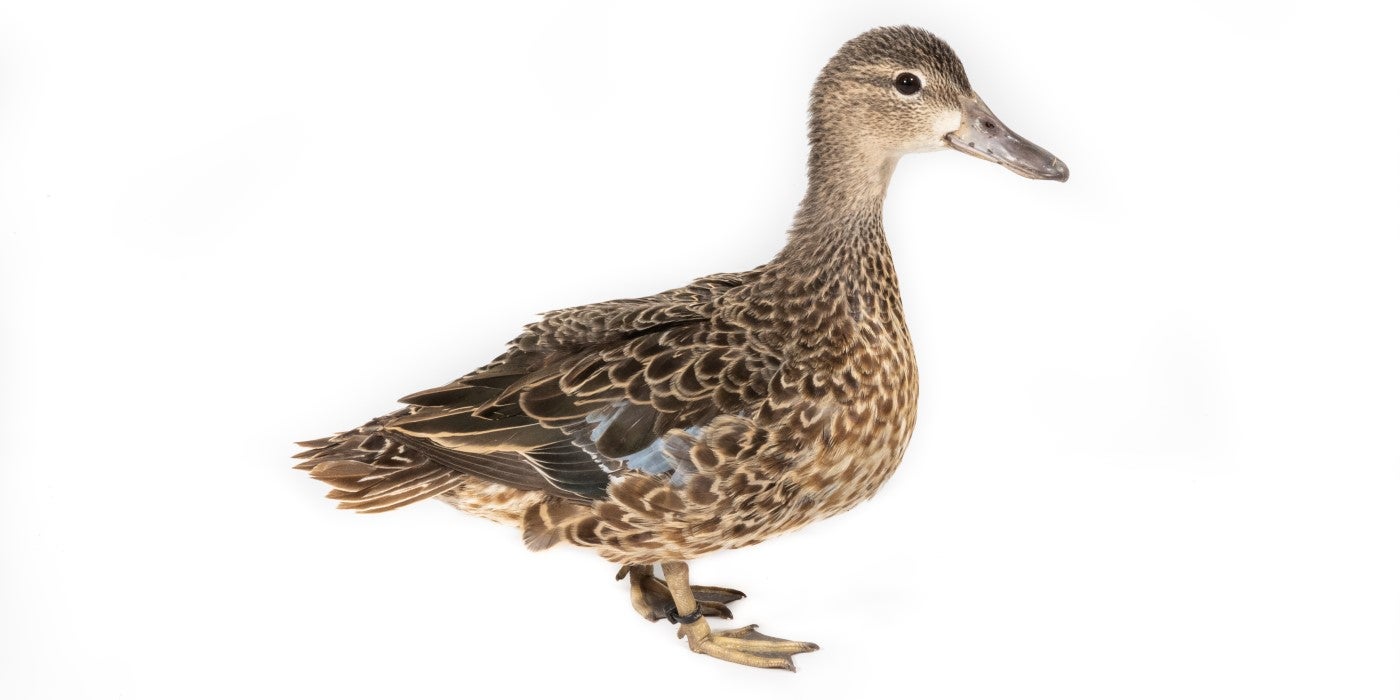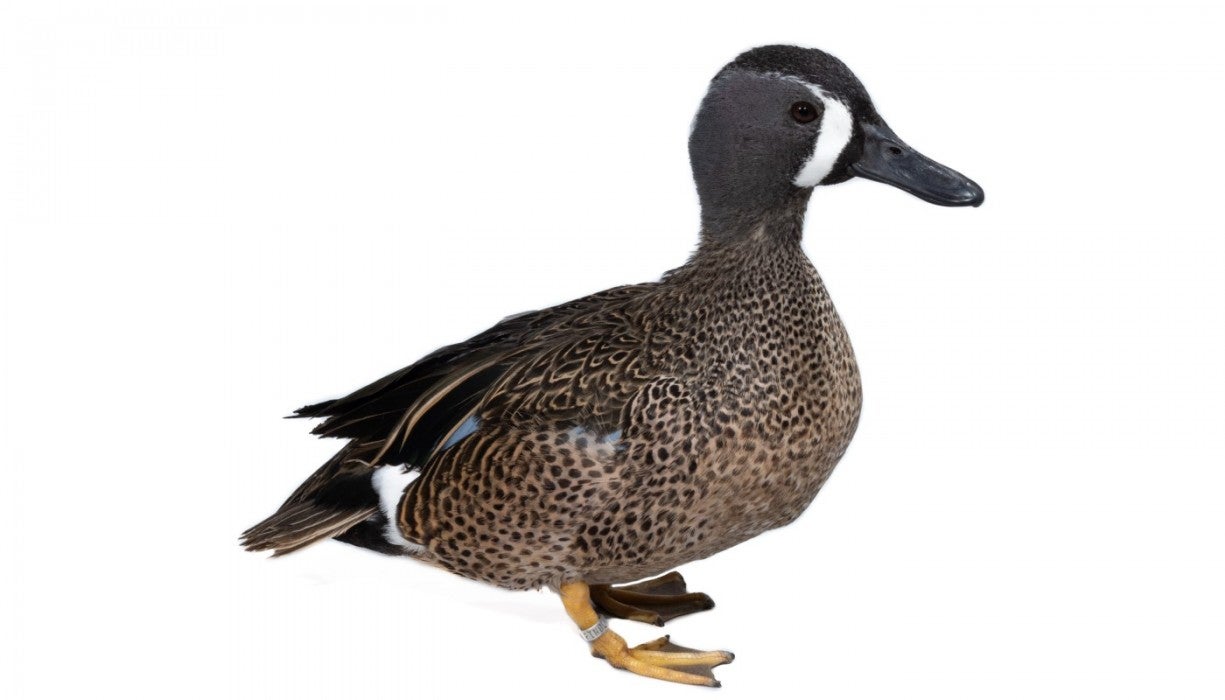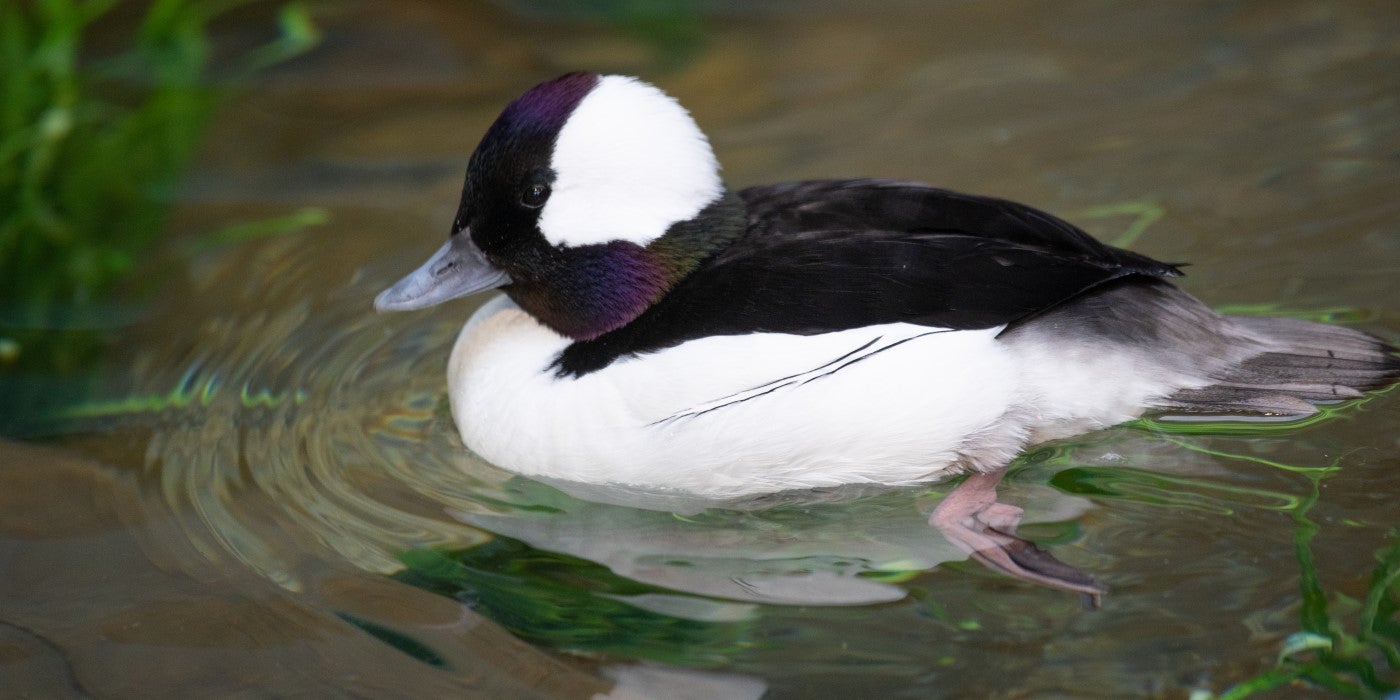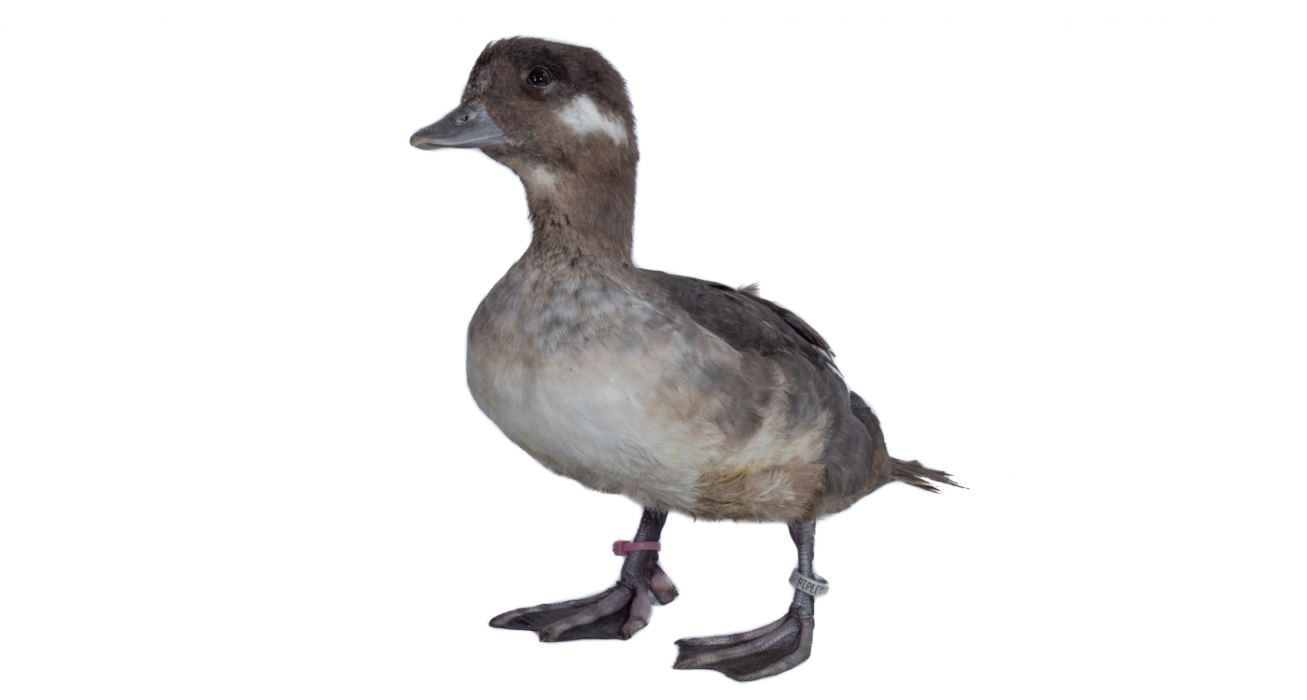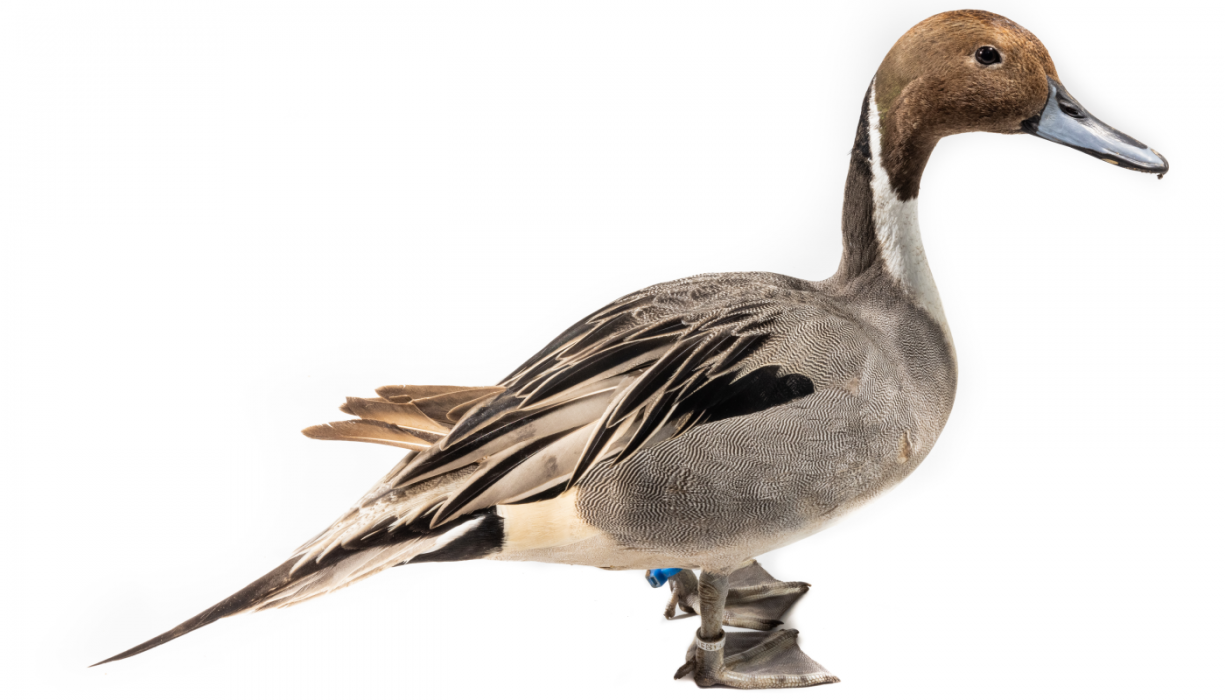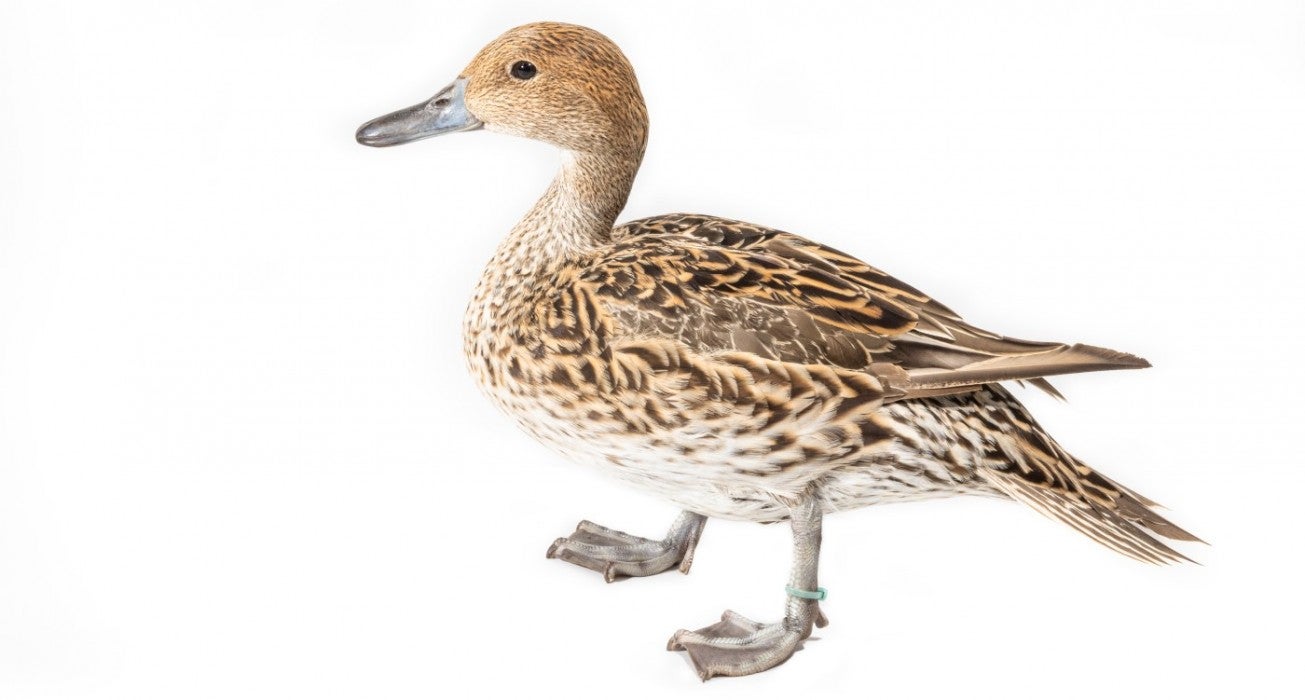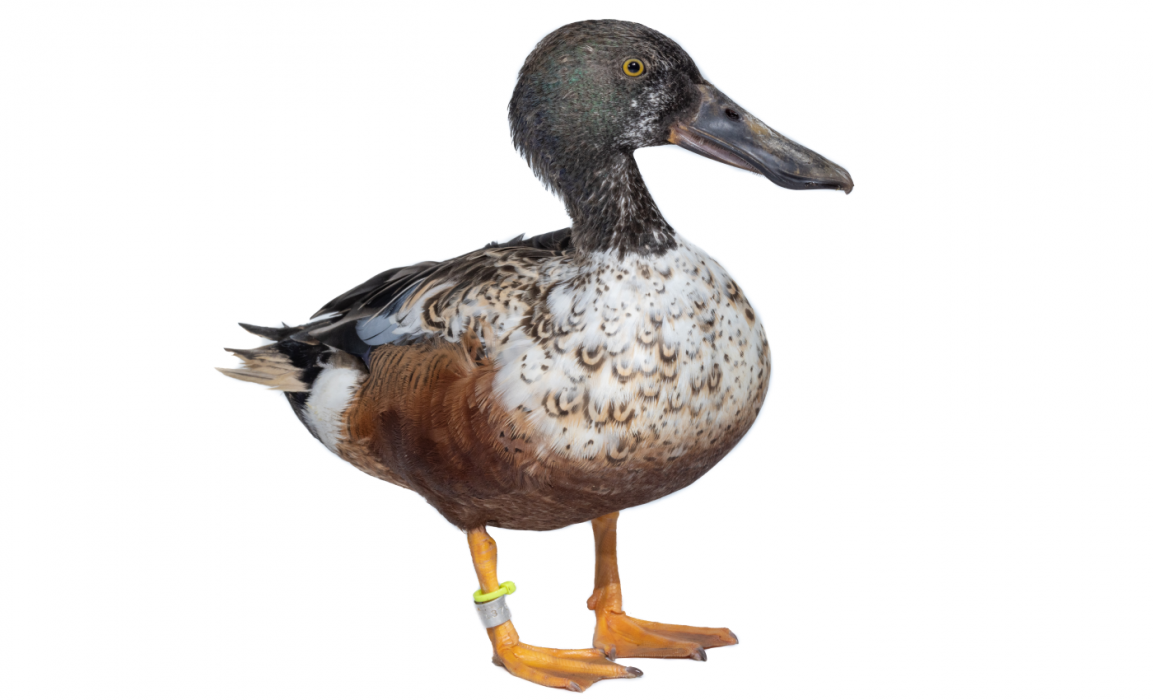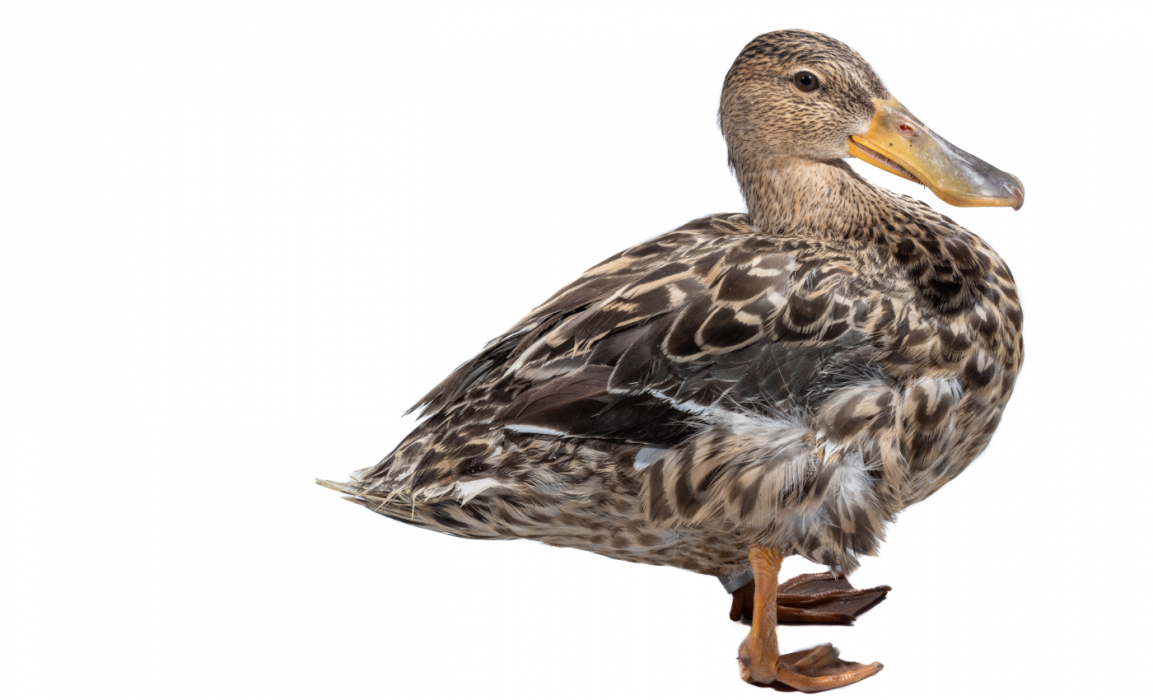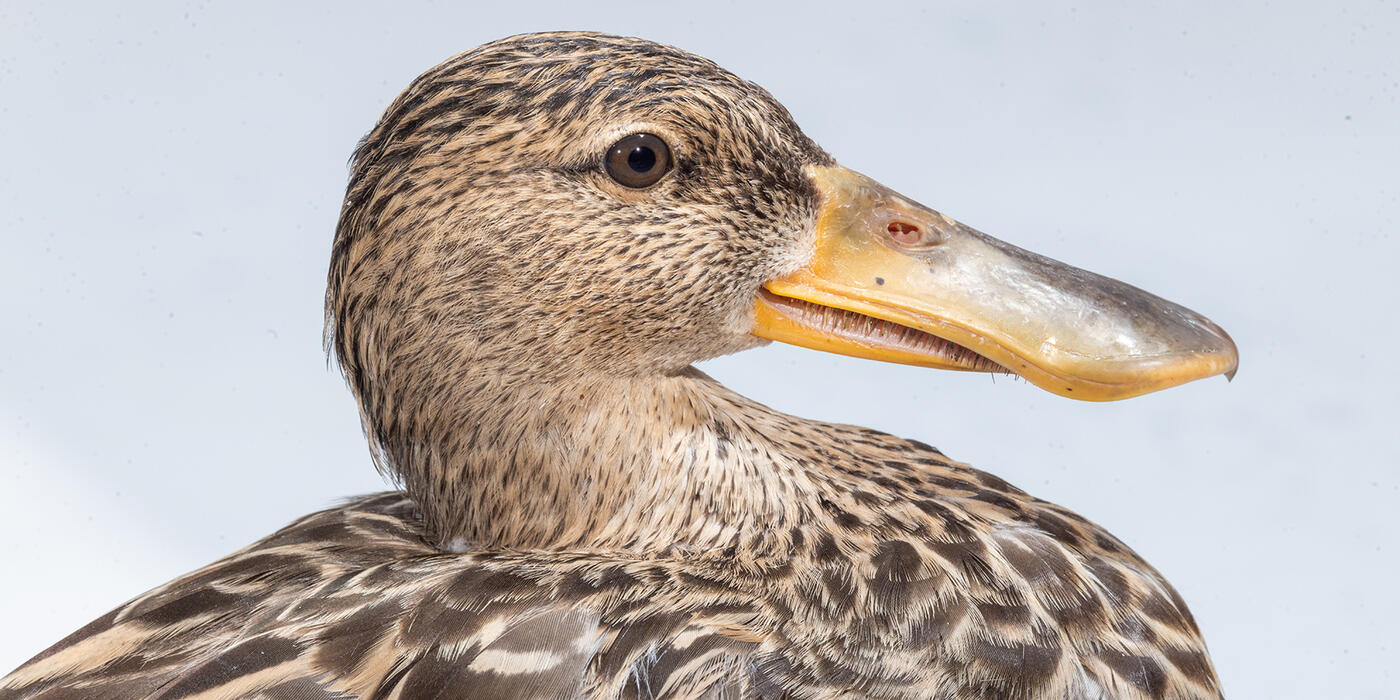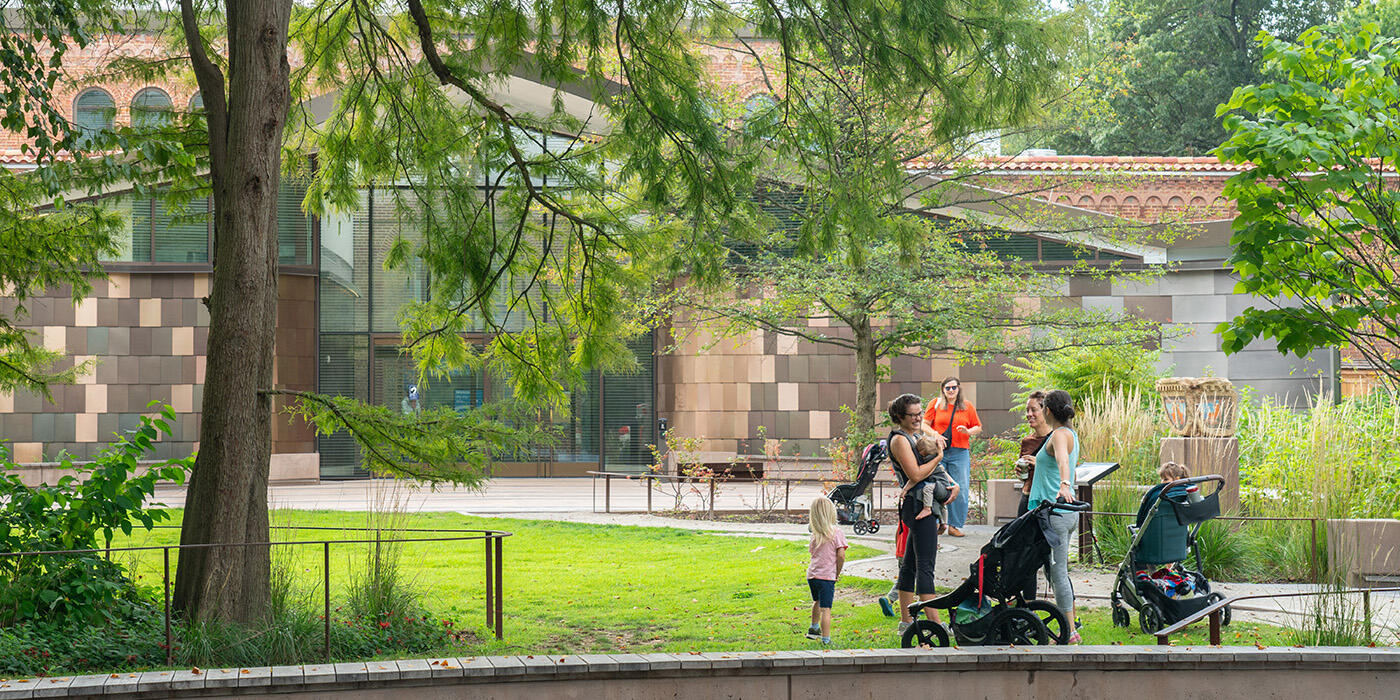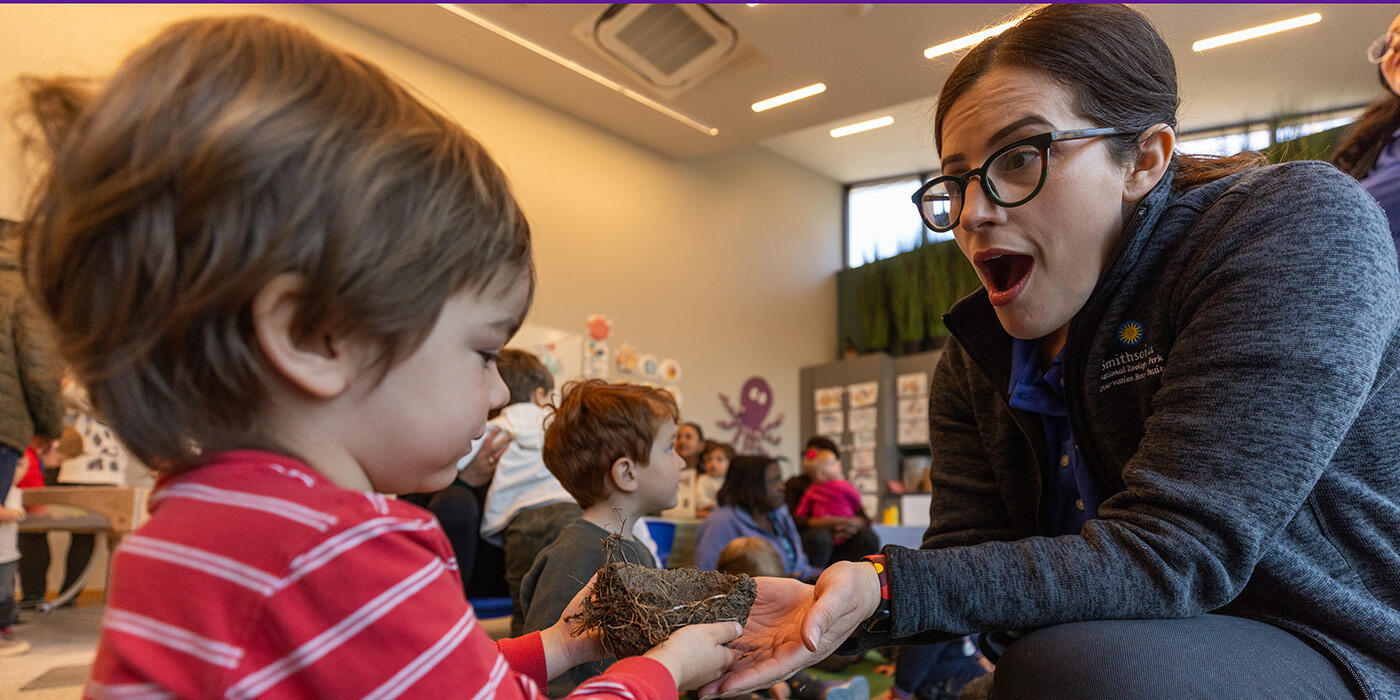A Quack-filled Roll Call: Meet the Ducks of the Bird House
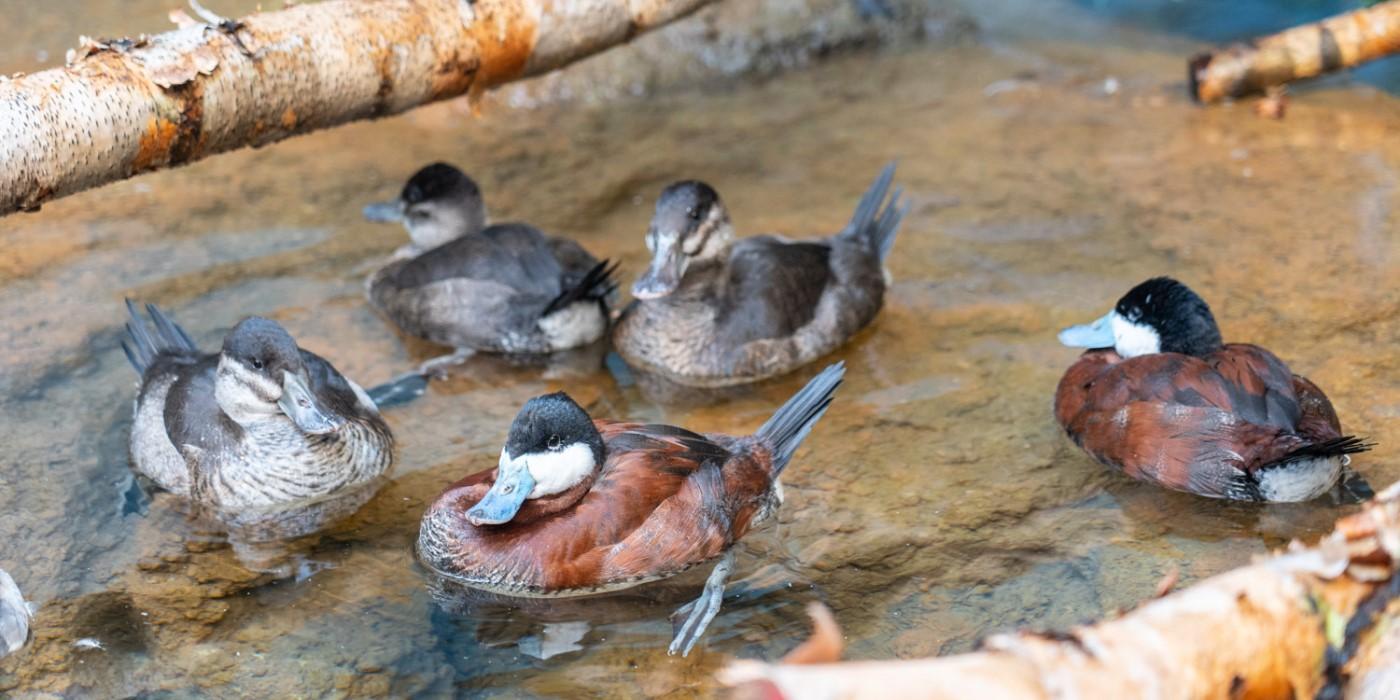
On March 13, the newly renovated Bird House’s doors will flap open, welcoming guests with a chorus of chirps, tweets and quacks.
Yes, quacks. Sometimes called “the duck factory of North America,” the Prairie Pothole is an important area of the northern United States and southern Canada where more than 50% of North America’s migratory ducks go to breed. While visitors will have a chance to see and hear ducks throughout the Bird House, most will be waddling around the Prairie Pothole aviary.
Get to know the 11 lucky duck species in the Bird House from animal keeper Jen Ferraro.
Please note, except for the Black-bellied whistling duck, the descriptions of the male ducks are during breeding season. Between August and November, the males molt their vibrant plumage and grow feathers similar in color to their female counterparts.
Blue-winged Teal
Blue-winged teals spend more time on their breeding grounds than most migratory birds. They are one of the first to migrate north in the fall, and one of the last to head south for the winter.
Once these ducks arrive at their breeding site, the female searches for the perfect spot to build her nest. She chooses a nest site by landing in a grassy area and walking around. Much like how we look for the best house or apartment, these ducks take their time finding the most suitable spot. After several days of searching, she builds her nest by scraping a depression in the ground with her foot and lining the nest with dried grasses and her down breast feathers.
The blue-winged teal calls often sound like someone laughing. They make a high pitch whistle and bleat in frequent, evenly spaced intervals. These ducks can also be found in our Delaware Bay aviary.
Green-winged Teal
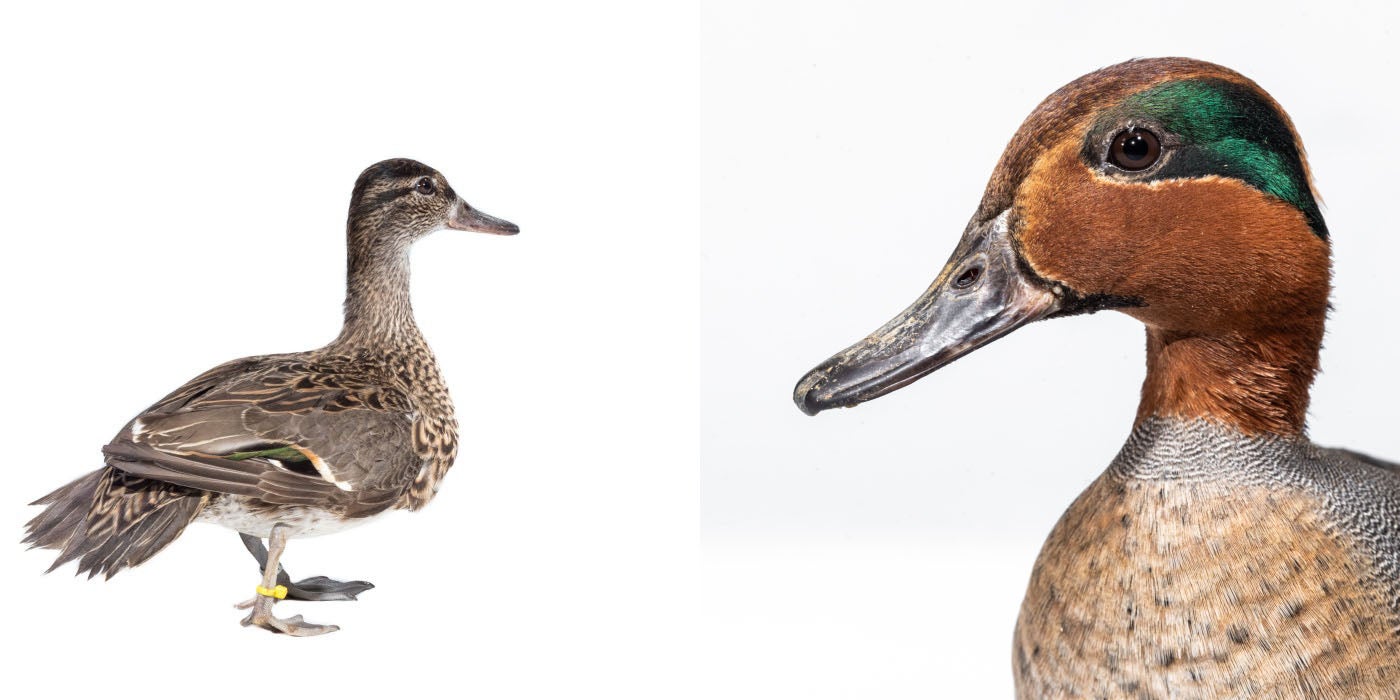
Fweet! Time out – guests may hear something that resembles someone quickly blowing a whistle, but we’re not hosting any sports games in our Prairie Pothole aviary. The sound is actually a green-winged teal! These ducks make very high pitch, loud, quick whistling vocalizations.
Green-winged teals are North America’s smallest dabbling ducks. Dabbling ducks primarily eat from the surface of the water instead of diving for their food. Green-wing teals are also one of the fastest flying ducks in North America. On average, these ducks fly at around 50 miles per hour, but the fastest recorded flew around 60 miles per hour.
Males have greyish bodies with a narrow, vertical white stripe on their shoulder. Females are a bit more challenging to identify, but visitors should look for a narrow black stripe around their eye and smaller black stripe around their bills. Green-winged teals are named for the dark green coloration on their forewing, which can be seen on both sexes when their wings are extended.
Green-winged teals have some of the most elaborate mating “dances” among ducks. Males exhibit a broad range of vocalizations, head bobs and swimming patterns to attract a female. A male green-winged teal will propel himself up out of the water while vocalizing, then raise his wings and tail. Courtship occurs in large groups. At times, up to 35 males can be courting a single female.
Bufflehead
While the green-winged teal is the smallest dabbling duck, buffleheads are the smallest diving duck in North America! They are also unique for their ability to fly directly from the water. Most ducks have to “run” along the surface before achieving takeoff.
Buffleheads are named for their large-headed appearance relative to their small size. Prairie Pothole aviary visitors can identify the male by his white body and dark head. He also has a white patch around the back of his head. Females can be identified by a white patch on their cheeks, which extends from the bill to the eyes.
Guests who are lucky enough to visit when the ducks are courting may witness the males giving a chattering like song as they throw their head back and bob it up and down. Interested females will respond with a guttural “cuk-cuk-cuk” sound that appears to shake their whole body.
Canvasback
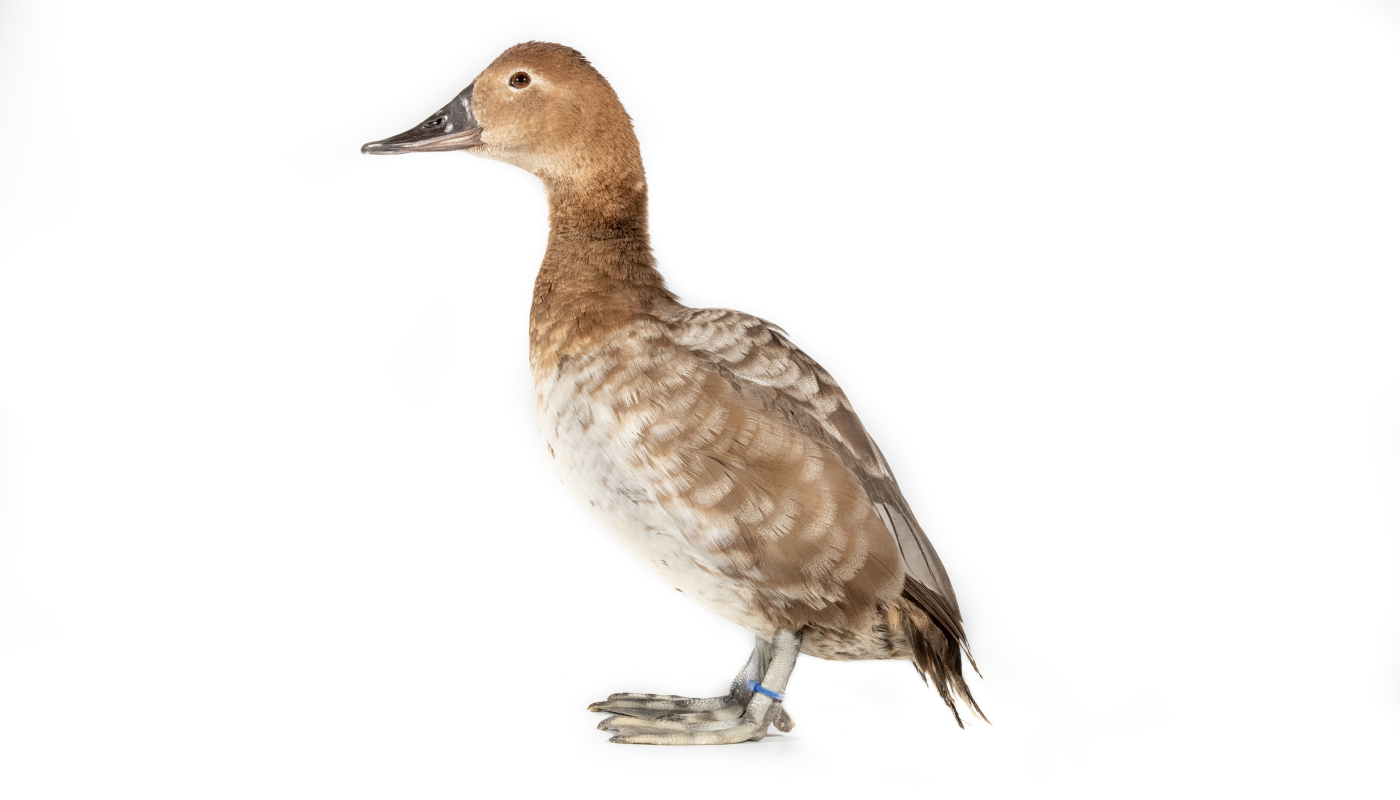
From the smallest diving duck in North America to the largest! While the tan, gray and cream feathers of the canvasback ducks inspired their common name, their scientific name, Arthya valisineria, is derived from their preferred food: celery root, or sp. Valisineria americana.
Visitors hoping to hear these ducks will have to listen closely. Canvasbacks are some of the more soft-spoken ducks in our Prairie Pothole Aviary. The males will make a soft cooing vocalization to the females, who will answer with a soft “Krrr krrr” sound.
Redhead
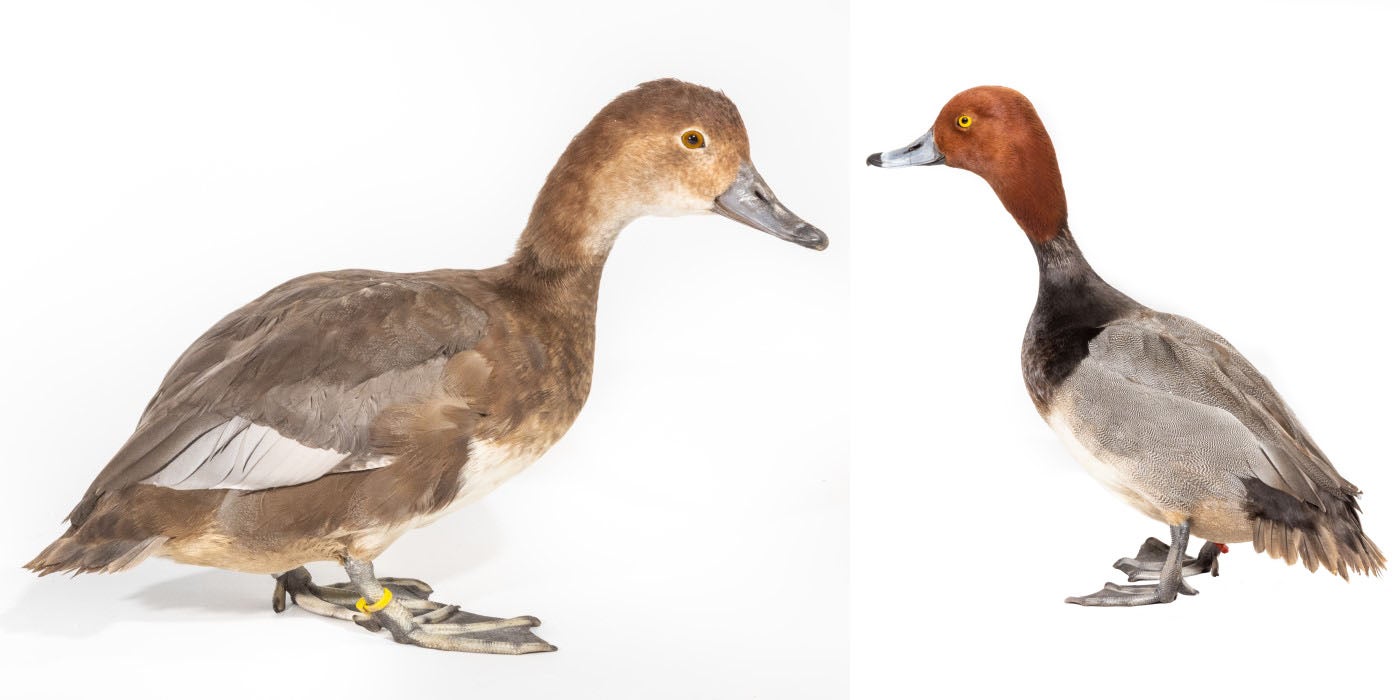
Unlike many other migratory ducks, redheads tend to fly with erratic shallow wingbeats in groups of unorganized patterns.
The male redheads’ courtship vocalizations may also throw visitors off since these ducks make a cat-like, wheezy meow. I recommend following the sound! During courtship, males perform a gymnastics-like head throw where they bend their neck over their back and touch their head to their tail. Males also make a low, guttural growling sound when threatened by other redheads. Females make a more traditional quacking sound.
Keepers have to keep a close eye on these ducks when it’s nesting time. Redheads can be parasitic brooders. They will drop their eggs in another duck’s nest, leaving their chicks to be hatched and raised by other ducks.
Gadwall
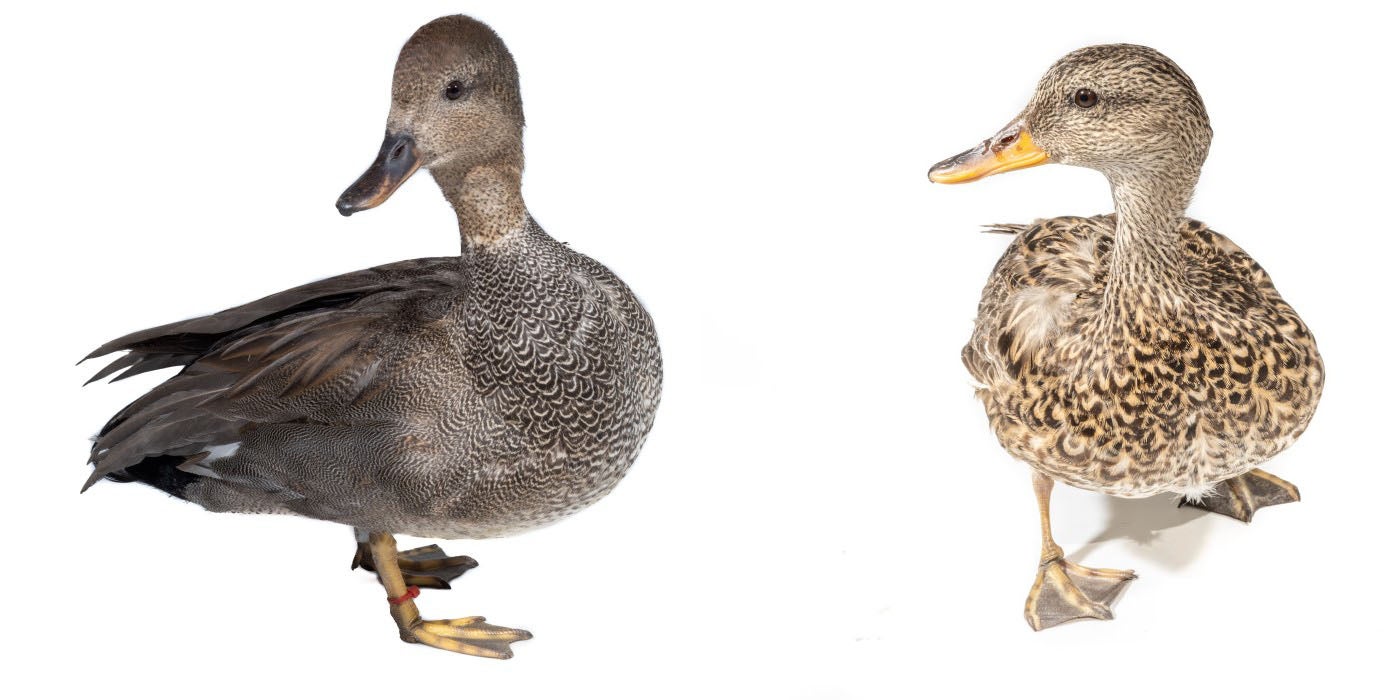
Gadwalls can be easily identified in Prairie Pothole by their vocalizations! Males make short burp-like and low pitch “meh” sounds and will vocalize year-round. The females only vocalize during breeding season, making short sounds with a quick high pitch whistle in response to the males.
Another fun thing to watch out for during breeding season is the gadwalls’ displays. A male will ruffle his feathers and draw his head close to his body then push it out toward the female. An interested female will respond by pulling her head back and extending it rapidly in the male’s direction.
Female gadwalls eat more insects than their male counterparts to keep up with the nutritional demands for laying eggs. Keepers also have to pay close attention when we feed them because gadwalls are notorious for stealing food from other diving ducks!
Northern Pintail
What’s in a name? Northern pintails are sometimes referred to as “the northern nomads” because of their extensive migratory routes. They have been found on every continent except Antarctica. These ducks are also called “the greyhound of the skies” because their long, slender bodies and 3-foot wingspan allow them to fly great distances at fast speeds, reaching upwards of 60 to 65 miles per hour.
Northern pintails make short bursts of sounds that resemble something like a wheezy train whistle. During courtship, they make a “geeheee” vocalization followed by a short whistle.
Northern Shoveler
Northern shovelers are named after their shovel-like bill. Their bill is lined with comb-like projections, called lamellae, which are designed to sift through marsh waters for tiny crustaceans and seeds. As another way to find food, these ducks will swim together in large circles. The motion stirs up the sediment and brings crustaceans out of hiding.
Lucky visitors may get to hear the male’s wheezy “took took” vocalization during courting. Females will respond with an equally nasally quack. While many ducks will pair up with multiple partners during breeding season, northern shovelers are unique because they are seasonally monogamous. Once a pair bond is formed, they will remain together until the birds leave the breeding grounds in the fall.
American Wigeon
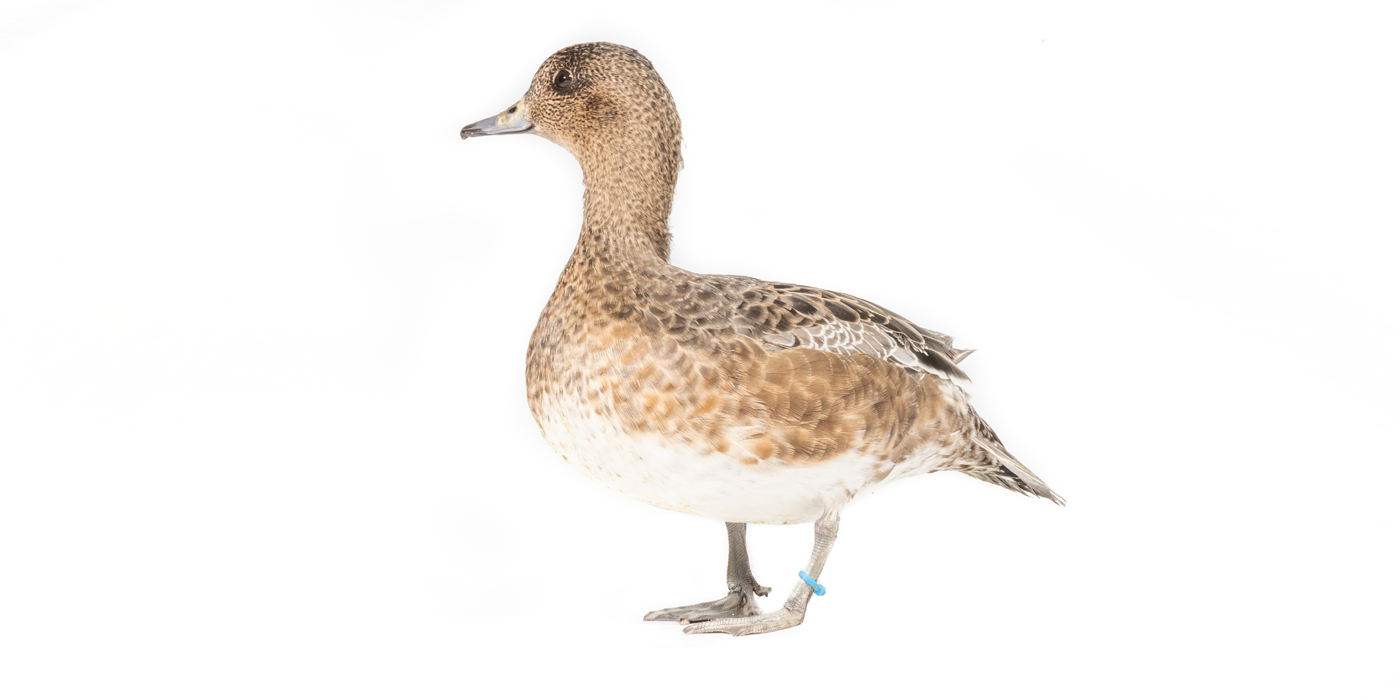
American wigeon are some of the most vocal ducks. Males will make a high pitch whistle year-round, which sounds like someone blowing through a kazoo. Females do not vocalize year-round but will respond to males during courtship with a grating grunt or growl.
These ducks are also known as “baldplate” because of the white stripe on the male’s head. Since the males sport this stripe year-round, it is an easy way to identify them from other birds.
The American wigeon hold the record for eating the most plant matter of any duck in North America!
Ruddy Duck
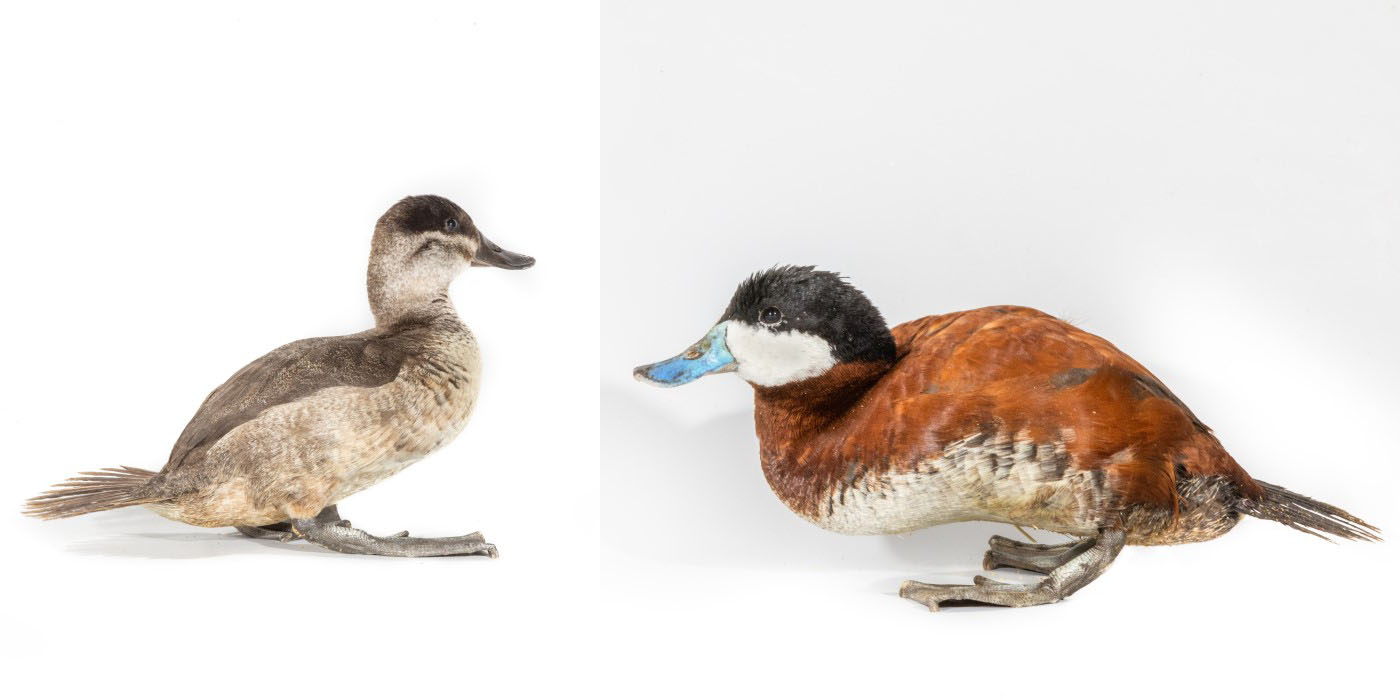
While the American Wigeon is the most vocal duck on the pond, the Ruddy Duck is the most silent duck in North America. During courtship, males will give off a low sound—like a spring “boing”—to attract females. Females call their broods with a nasally sound, and both sexes will hiss when threatened to ward off predators. These ducks also mostly migrate at night in small groups to avoid predators.
Ruddy ducks are one of the clumsiest ducks on land. They appear to scoot along the ground instead of walking or waddling because of their broad chests and short legs. As a result, they have adapted to be more defensive since they know they cannot outrun a predator. They are definitely small ducks with big attitudes! Most ducks will remain still or fly away when small mammals approach their nest. Ruddy ducks have been known to chase curious small mammals, like rabbits, away.
In addition to their big attitude, these birds lay the largest egg relative to the females’ size of any duck in the world. Considering they are one of the smaller diving ducks that’s saying something! Their eggs weigh between 2 to 3 ounces (60 to 83 grams) and females weigh 11 to 23 ounces (310 to 650 grams).
Black-Bellied Whistling Duck
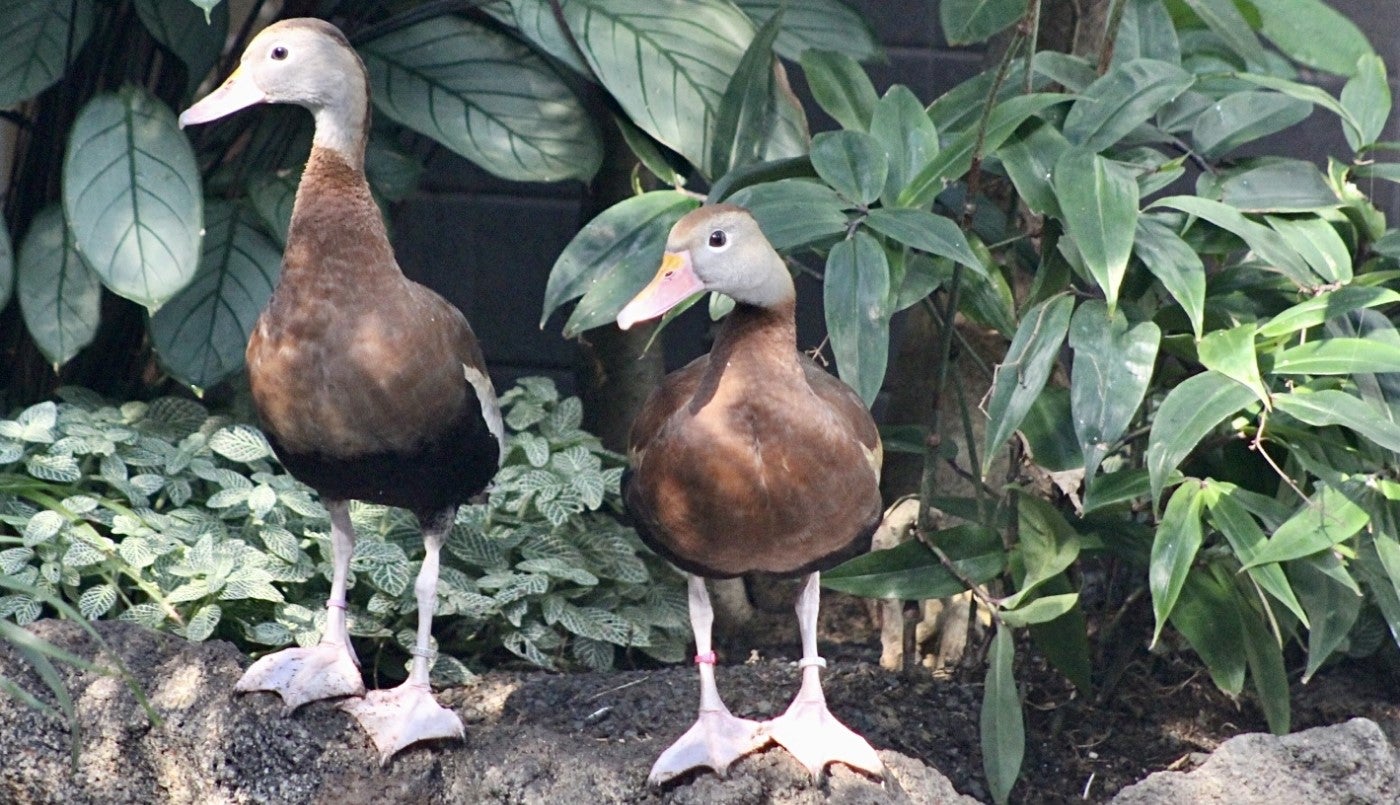
As their name implies, black-bellied whistling ducks have a high-pitched whistle for their call and black chests. This medium-sized duck can also be identified by their brilliant pink bill, long-legged silhouette and chestnut-colored back.
Black-bellied whistling ducks are unique in the waterfowl world because they often mate for life and both parents help raise young. In the wild, these ducks nest in large colonies. Their nests are usually in a tree cavity. In fact, black-bellied whistling ducks are most likely to be found perched in a tree and in forests rather than paddling in ponds and lakes.
Guests shouldn’t get their feathers ruffled trying to spot these ducks in the Prairie Pothole. Our black-bellied whistling ducks live in the Bird Friendly Coffee Farm aviary!
How to Help Ducks
One of the largest threats to all ducks is loss of their wetland habitat. Many wetlands are converted for agriculture. The best and most effective way to help ducks in North America is to is support programs like the U.S. Fish and Wildlife Service’s Duck Stamp. These programs protect and restore wetlands, while still compensating the farmers. The Federal Duck Stamp program alone has helped conserve more than 6 million acres of waterfowl habitat since 1934.
